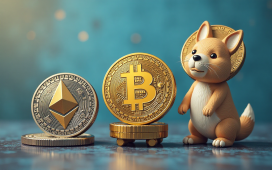Receive free US inflation updates
We’ll send you a myFT Daily Digest email rounding up the latest US inflation news every morning.
The US Federal Reserve may feel a little smug this week as its interest rate setting committee meets for the last time before the summer break. Annual inflation in America slowed to just 3 per cent in June, the lowest since March 2021. It has dropped below even the traditionally inflation-challenged Japan, where price growth has hit 3.3 per cent. Perhaps more impressive is that joblessness has barely increased and the odds of a recession are falling, despite the Fed’s aggressive 500 basis points of rate rises over the past 18 months.
Can chair Jay Powell really pull-off an “immaculate disinflation” of the US economy? If he did, it would make him one of the more successful Fed chiefs. Even the lauded Paul Volcker — who famously pushed interest rates up to 19 per cent in the early 1980s — ended up propelling US unemployment to its then highest since the Great Depression.
Goldman Sachs now only sees a 20 per cent chance of a US recession over the coming year. Economic activity is resilient. This month consumer sentiment reached a near two-year high. Markets are expectant too. A swath of US stocks, not just tech firms, have rallied. But a “soft landing” — when inflation is brought down without triggering a significant downturn — is far from guaranteed.
For starters, interest rates may still need to go higher. Investors expect a 25bp rise this week. The Fed’s “dot plot” of committee members’ rate projections also implies a further one this year. Last month’s drop in inflation to a two-year low was largely attributed to a fall in energy prices, and core inflation remains over double the 2 per cent target.
Crushing demand further to pull price pressures down would entail more job losses. Vacancies have fallen, but the labour market still looks strong with sturdy growth in wages. The Fed could face a difficult trade-off between its dual mandate for maximum employment and price stability as the target nears. Indeed, the Bank for International Settlements says the “last mile” of the disinflation process could prove the hardest.
It is also not precisely clear how fast the Fed’s prior rate rises have already passed through to the real economy, and will continue to do so. A recent Kansas City Fed paper said the peak deceleration in inflation could occur a year after tightening, but added that high uncertainty existed around that estimate. Either way, most economists agree a significant portion of the rate rises is still yet to be felt. That may well drag down growth further than currently anticipated.
Post-pandemic idiosyncrasies in part also help to explain the peculiar trifecta of high rates, falling inflation and limited unemployment. The rundown of savings and fiscal support have propped up demand, while a shift in spending from durable goods to services has eased some price stresses. An immaculate disinflation scenario will depend on how these factors also pan out.
Soft-landing optimism is not solely a US phenomenon. Some emerging markets that raised interest rates before advanced economies have already managed to bring down inflation without overly damaging output. European markets are increasingly hopeful now too. Inflation in both the eurozone and the UK took a notable step down last month, and their economies are showing some resilience. But it is worth remembering that in this uncertain climate, the pendulum between soft and hard landing scenarios has been swinging frequently.
Indeed, while it is undoubtedly positive that inflation in the US and around the world is falling, this post-pandemic interest rate cycle is odd enough to give investors banking on a soft landing plenty of pause for thought.






